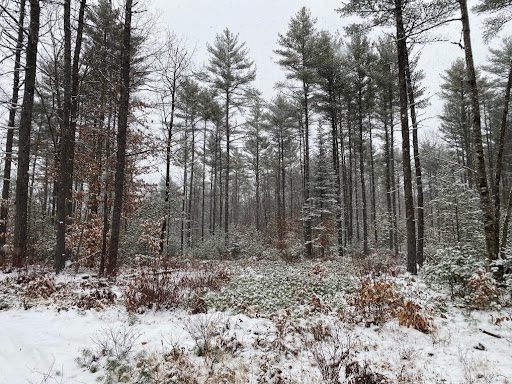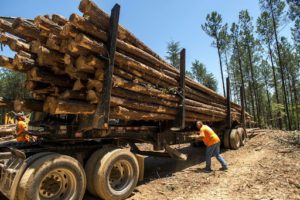New approaches to forest management have piqued the interest of many foresters and loggers in recent years. Sustainable forest management strengthens the adaptation and resilience of trees to natural calamities and supports the application of measures to fight climate change. Variable-density thinning (VDT) is one of the intermediate or initial treatment methods that can meet landowners’ plant and wildlife habitat improvement objectives. We’ve curated this guide to highlight the role of this sometimes-useful forest restoration strategy and establish broader knowledge of why or how variable-density thinning matters.
 What is Variable-Density Thinning?
What is Variable-Density Thinning?
Thinning, in general, is a mid-rotation or intermediate stand treatment designed to limit a stand’s density. The conventional uniform thinning method increases the uniformity of stands by creating space among trees to increase their individual growth and volume consistency across stands.
On the other hand, variable-density thinning is part of a silvicultural strategy that’s designed and implemented to accelerate late-successional habitat development by applying various harvest intensities across a stand.
Goals of Variable-Density Thinning
The primary objective of VDT is wood production or raw material acquisition. However, its goals include:
- Reduce resource competition
- Promote understory production
- Increase stand variability deliberately
- Improve biodiversity
- Assure wildlife habitat
- Improve forest aesthetics and health
Why Does Variable-Density Thinning Matter?
VDT is an important component of a forest management plan. Its role is to move the development of tree stands towards greater structural and compositional complexity. It increases the structural and spatial variability of stands. How? It creates conditions that lead to more crown length, encourages growth in mid- and under-stories, and promotes residual tree growth over-story.
Remember, however, that variable-density thinning doesn’t singularly improve long-term regeneration. If further plantings and stand entries are made, it can only improve the results.
Variable-Density Thinning vs. Uniform Thinning: The Differences
- Purpose: The purpose of uniform thinning is wood production and tree growth. VDT is implemented to allocate areas for biodiversity, wildlife habitat, and wood production.
- Reserve Areas: Uniform thinning reserves areas as part of the landscape or within the stand. VDT is typically incorporated within the stand to secure snags, understory plants, and coarse woody debris. It also provides areas with great shading and moderate temperature extremes.
- Specifications: Uniform thinning removes a percentage of trees and leaves uniform spacing among leftover trees. It includes marketable species with a few defects. VDT determines thinning process based on the size and number of gaps, species to be left in gaps, and size and number of skips. It includes individual trees or less common species with high wildlife value.
- Gaps: Gaps aren’t usually included in uniform thinning. VDT includes gaps to increase crown retention and tree growth in and around gaps. It also promotes light exposure to understory development.
Implications of Variable-Density Thinning
VDT has several implications for land management as follows:
- WDT can promote tree growth with little to no damage to residual trees when applied operationally with gaps and skips.
- VDT also keeps the damage from windstorms low. The mean tree height to diameter ratio can also predict the damage.
- The trees grow (including 60-80 years old trees in all stands) to respond to thinning in a relatively short period following VDT.
- The growth response also differs within and between trees due to different treatment components. This ultimately increases the structural diversity of trees.
- Understory plants also respond rapidly to thinning.
- VDT allows more light to enter the forest canopy. It increases the growth and coverage of tree species.
How Does Variable-Density Thinning Matter?
Variable-density thinning encourages forest restoration by encouraging natural tree regeneration of various species. It promotes the development of different canopy layers, which is a typical property of old-growth forests.
VDT’s primary goal is to recreate the natural process by bringing the forest back to the initial conditions that they were in before any wildfire suppression. Overly dense tree stands are susceptible to fueling destructive and larger wildfires. Hence, VDT matters in forest regeneration and restoration to a more fire-resilient and healthier stand.
Thinning is also a common harvesting method in drier climates. The canopies of trees, such as pitch pine, are less dense in those areas. Consequently, the forest floor is exposed to more sunlight which fosters the regeneration of pine seedlings and natural growth.
Another reason VDT is a restorative thinning treatment is that it reduces tree stand densities to increase the availability of resources for remaining trees. The lower the post-treatment densities, the higher the growth of tree diameter. Hence, typical uniform thinning treatment isn’t as efficient as VDT as it includes low-density gaps and areas leading to higher tree diversity in the future and the rapid development of larger species.
At Tall Pines Forest Management, we consider a wide array of effective forestry methods and techniques to achieve the best possible results for landowners. Our forest management plans include thorough action plans to achieve landowner objectives. Contact us today to get help from our expert loggers and forestry team.


 What is Variable-Density Thinning?
What is Variable-Density Thinning?
0 Comments